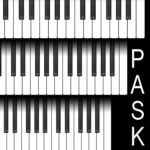Evidence for the need - conclusions
Everything else being equal, pianists with smaller hands are disadvantaged on the current keyboard in two main ways. Firstly, they are more likely to suffer from pain and injury. Secondly, a significant proportion of the piano repertoire is ruled out for them – they have greater difficulty learning difficult repertoire, with many pieces physically impossible for them to play. These two factors mean they are thus prevented from reaching elite performance standards. So-called ‘stretching exercises’ have not been demonstrated to have any significant effect on hand spans, and can lead to serious injury.
Research and much anecdotal evidence indicates that pianists with hand spans of 8.5 inches (21.6 cm) or less would benefit significantly from a smaller keyboard. Using this metric, 23% of adult men would benefit and 87% of adult women! And evidence from adult men with spans of up to 9 inches suggests that even they prefer a 6.0 inch (15.2 cm) octave keyboard for some repertoire – particularly works written by composers with very large hands including Rachmaninoff, Liszt, Grainger and Vine.
Keyboards with narrower keys help to remove discrimination. A 5.5 inch (14.1 cm) keyboard removes the one inch advantage men have over women. The proportions of pianists with ‘small hands’ could be dramatically reduced if they were to have access to the 5.5 inch and 6.0 inch octave keyboards. See How many adults have small hands?
Children of either gender have hands even smaller than most adults but are currently forced to learn on a piano designed for men. A keyboard that was designed to suit male virtuosos in the late 1880s. Before that time, piano keyboards generally had narrower keys.
Ultimately, what is most important is the music itself – as experienced by the pianist and their audience. The listener hopes for a wonderful, transporting musical experience, and the pianist wants to be able to become ‘lost’ in the music rather than thinking about technical issues .
‘The ability to control the sounds at the piano, and this means producing lovely tone as well as finely shaped phrases with a wide range of dynamics, depends to a large extent on the ease with which we can play.’ (Max Cooke, 1985)
As recognised by Otto Ortmann back in 1929, ergonomic factors – including a pianist’s hands being reasonably well-matched to the keyboard – are a critical factor affecting technical ease. If a reduced-size keyboard enables a pianist to reach greater heights and the audience is transported along with them, then why deny the world pianos with narrower keys?
See individual pages for references.
A bibliography is available here: https://paskpiano.org/wp-content/uploads/2022/10/Alternatively-sized-piano-keyboards-Bibliography_Sept-2022.pdf


